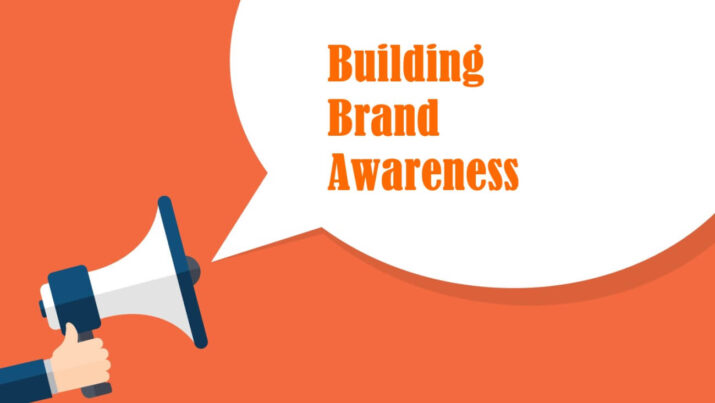6 Best Branding Strategies For A Tech Startup

It takes considerable time and effort to finally decide you’re starting a tech business. Don’t let all those efforts go to waste with trashy branding.
From day one, know everything you need about your startup — the tangible and the intangible aspects, the logo, and the values. Then work your way up. Entice a focused audience with just the same focused energy and resources.
Follow along as we talk about the best branding strategies for a tech startup.
It takes considerable time and effort to finally decide you’re starting a tech business. Don’t let all those efforts go to waste with trashy branding.
From day one, know everything you need about your startup — the tangible and the intangible aspects, the logo, and the values. Then work your way up. Entice a focused audience with just the same focused energy and resources.
Follow along as we talk about the best branding strategies for a tech startup.
① Create Brand Awareness
Once you start your tech business, no one knows about it. Especially with tech products with a very wide learning curve, potential customers are most likely unaware of the products you offer.
 Photo: marketingtutor.net
Photo: marketingtutor.net
Creating brand awareness is always a good branding strategy. After all, how will people patronize a product they barely know?
In this step, new tech entrepreneurs create some medium or channel to disperse brand identity. It can be through social media accounts, websites, blogs, and paid advertising.
⫸ New businesses need new websites.
The same way a brick-and-mortar store owns a physical address, tech startups harness the power of a website. A website hosts all kinds of information like products and services, contact information, brand assets such as logos and social media accounts.
⫸ A website is like a mother tree in a forest.
Marketing efforts draw customers from all corners of the web into your website. And from there, your website does all the work. It tells about the founders of the company, the values (more on this later), products and services guides— basically, everything that may jumpstart the brand’s awareness. Your website is also an excellent place to showcase the tech startups’ visual assets.
⫸ A logo is a single picture or typeface that encapsulates the message of the company.
Tech startups deal with computers and software that might seem intricate for laypeople. So general advice for budding tech businesses is to develop symbols, motifs, and themes most people can relate to. Thanks to logo makers, it’s easier now for tech creators to design a logo without design experience.
While the visual aspects act as a passive connection with the stakeholders, networking, on the other hand, is an active communication and branding strategy. Business owners must join tech startup groups or organizations. Engaging with co-business owners invites not only a host of potential buyers but also generous and trusting investors.
⫸ Don’t forget social media.
Once the product is up and running, make sure to engage with social peeps. Craft messages that attract your intended audience. Share vital product information and how-tos to manage the ease of the broad learning curve. Share success stories from customers.
⫸ Creating brand awareness permeates every step of the branding process
As you go along and attract hefty customers while building on that bottom line, continue developing messages that do not fail to resonate with the right audience.
② Brand Values
Most companies forget this part. Philip Johansson and Emil Strindemark of Jonkoping University interviewed four Swedish tech startups. All of them focused less on the importance of brand values. Instead, they highlighted product quality and customer satisfaction over corporate values. The researchers, in the end, recommended that tech startups must amplify their brand values in their branding process.
 Photo: shoppinggives.com
Photo: shoppinggives.com
Due to the structural and moral problems of the pandemic, companies should devise a different branding approach. One that highlights sensitivity and promotes cultural inclusions. And what a great way for companies to ride on the tide by upholding, strengthening, clarifying, and deconstructing their company values.
This means they should side with some of the biggest questions of the world. What does your enterprise do to combat the warming effects of climate change? What are your companies contributions to the escalating racial tensions? What are the views of the business regarding discrimination and Asian hate? What steps do you take to alleviate poverty in a specific community?
How about questions about maternal and paternal leaves, work-life balance, appropriate remunerations. Businesses, both big and fledgling, must channel their answers to these questions through their branding stories and messages.
⫸ Stories are powerful.
Harvard Business Review calls it an irresistible strategic business tool. They serve as promising avenues for corporate values. Share stories of customers’ success. Share stories of employees’ hobbies. Share stories of the company’s founding. What is there to tell the world that is unique to your brand’s perspective. Share it.
⫸ When good values permeate the brand, the audience takes notice.
Buyers nowadays are becoming more sophisticated. They only resort to brands that cater to their values. If you’re a brand that conveys your corporate values at every step of the branding process, then you’re poised to gain the market’s favor.
③ Product or Service Quality
Good branding is often the result of confidently good products and services. That speaks loudly among the tech industry. Their products flood the market. Collaborative software? Educational technologies? Logo design tools? Website UI/UX software? Unless you have a very unique product to sell, you are stepping into a saturated world. Now, what can separate your business from others, even those of titans in the field? Your products.
 Photo: yakkyofy.com
Photo: yakkyofy.com
The quality, usability, even affordability of your tech products cut the chase. And so part of a good branding strategy is constantly communicating the product’s unique selling points.
People scour the web to search for the best products, consuming content here and there for anything that may advance their work process. And for someone to be a top choice, you must pump information about the best you can offer. How to use the products? What’s the difference between your products with others in the industry? Answers to these questions guide the customer’s decision leading to patronizing the brand.
However, spreading the word is not everything to this part of the branding process. As I mentioned, your products are one significant factor in successful branding. So it only pays to develop and improve the line of products and services consistently.
This means following the customers’ footprint, analyzing their actions and comments. Good branding relates to having a good ear to the pain points of the customers. Customer satisfaction builds a good reputation.
Therefore, develop and improve. Make your brand appear listening to the audience. Stakeholders love a positive change. Investors are keen on developing tech startups.
Constantly developing the products must sit at the heart of branding strategies. Branding itself is amorphous. It continually changes every quarter, every year, in effect to the bottom line or executive decisions. And so should the products continually develop. If the goal is to serve the customers better, then products should ride the tide of customer approval.
④ Customer Support
One customer dissatisfaction can be bitter poison to the whole brand. Such experience of tech startups can ruin a very small pool of customers. So pay attention to pain points. I mentioned that part of the continual development of products and services is always listening to what the customer has to say. For customer support, it means just helping them navigate your products. — guiding through the ropes of the service. And let them know you’re only a call, a message away.

Photo: esoftload.info
Johansson and Strindemark’s research shows that most tech startups attribute their success to valuing the customer service experience. While it’s impossible to address the tiny bit of problems marring the customer journey, businesses can appear helpful when they project their contact details everywhere and share content that answers concerns.
Customer support, as proven by science, gives information that no company resources can extract. Loyal and happy customers are willing to subject themselves to interviews or case studies. All to further the growth of the brand. More testimonials mean more curious onlookers flocking on the buyer journey.
⑤ Focus on a Narrow Target Group
As you start your tech enterprise, you might want to cater to as a large customer base as possible. And the inherent intention is good. Reaching a far wider audience translates to better bottom lines.
 Photo: webmonstermarketing.com
Photo: webmonstermarketing.com
Yet when you’re starting out, you have limited people and resources. A broad audience is challenging to satisfy. Their diversified interest and needs will gorge on your resources sooner leading to the downfall of the enterprise.
⫸ Aim a smaller group of people.
Define your customers once you start branding. And then cater only to these selected types. In this way, you’re able to focus your expertise, time, and resources to improve the customer experience
Once you have a loyal base of customers, you may slowly lax the rigid definition of your customers and include further different types of people. Your happy customers will take care of your brand’s positive reception, affecting a greater number of people.
Focused branding spells a concentrated marketing strategy. Once you identify your target customers, you can then channel your stories and unique selling points to selected networking tools. Again it means you can minimize money waste due to an untargeted customer base.
Final Thoughts
Good branding can mean the difference between a brand that vanishes in the void of the free market and a brand that sticks and permeates a broad aspect of someones’ life. No one wants to be the former, and everyone wants to be the latter.
We’ve seen it among brands like Google and Zoom. They have garnered a good share of the market because of a good calculated means of branding.
We’ve also seen brands like Hotmail, Netscape, and Kodak get lost in the void only not to be seen and heard again because their brand is a slippery experience.
I know it’s a long shot to even think your tech startups will reach the height of Apple. But it pays to get close attention to how these big firms brand themselves. You might want to replicate their branding strategy when they were starting out.
Fortunately, those steps have been outlined above. Steps so few and simple and certainly not expensive nor time constricting. Yet, they are a good stepping stone to hit the pinnacle of a tech startup’s most significant potential.







